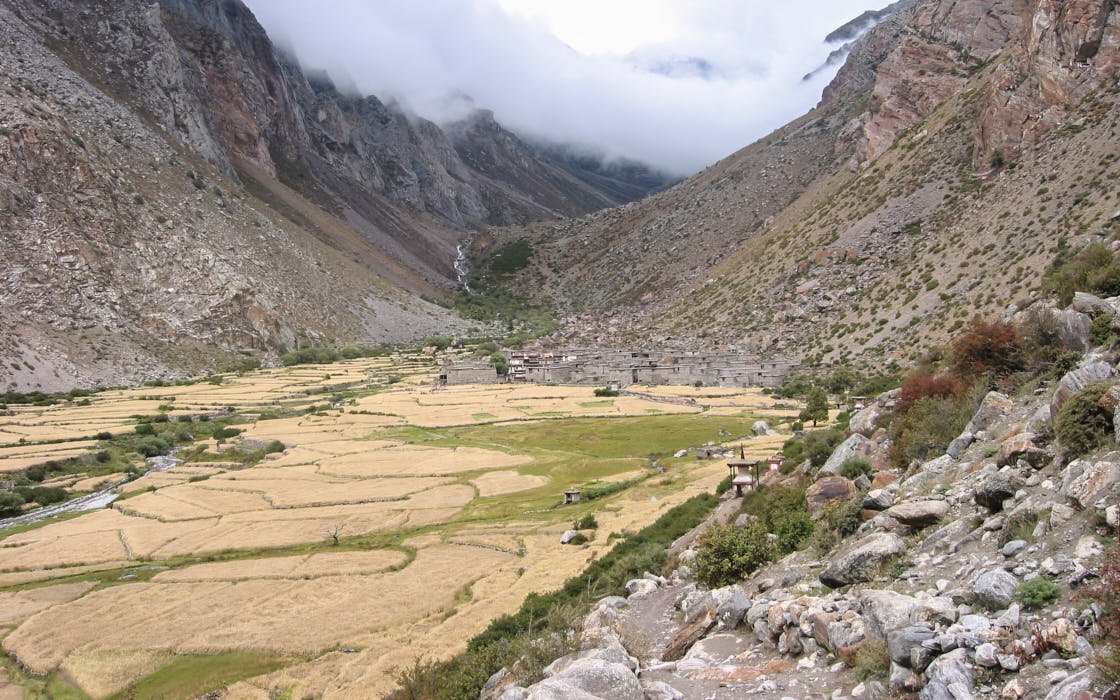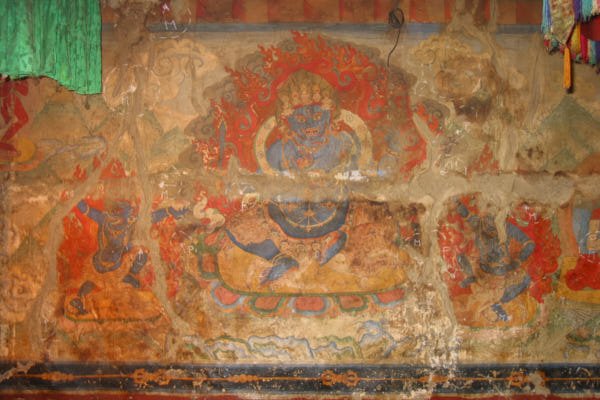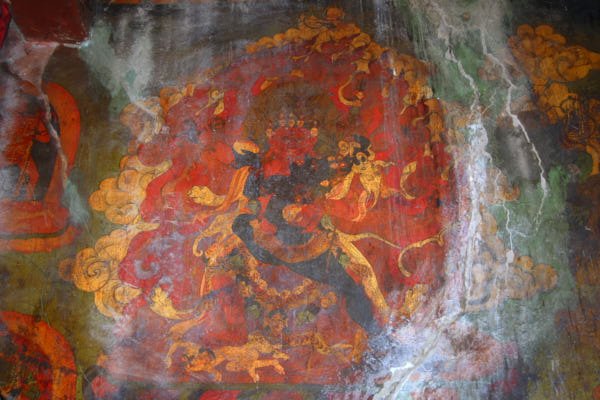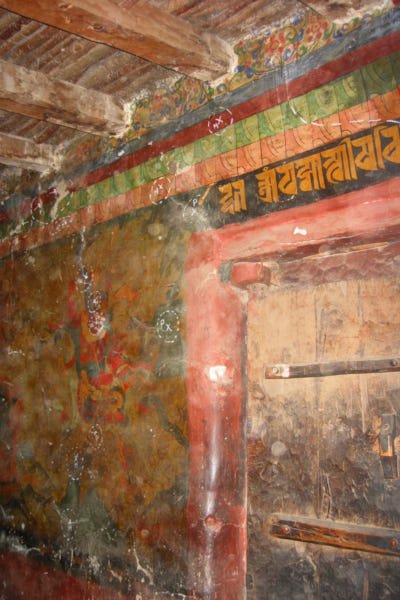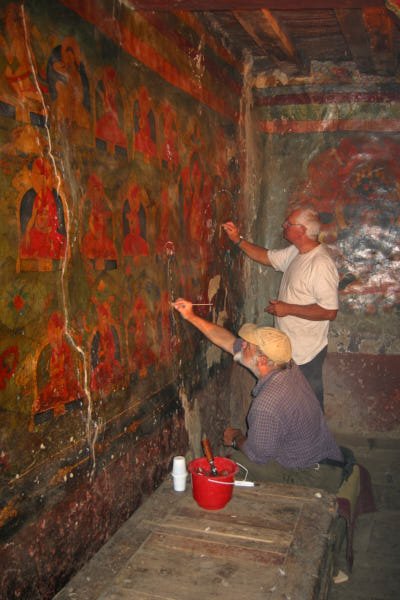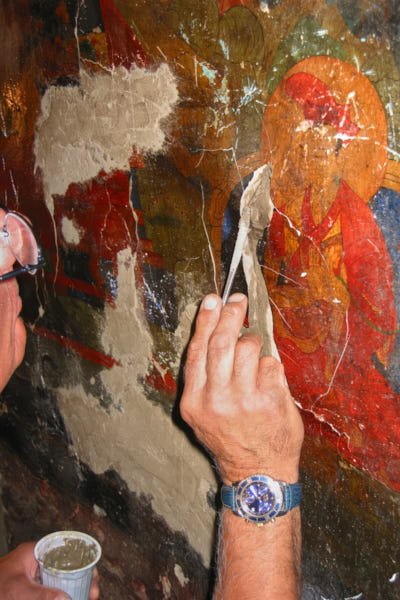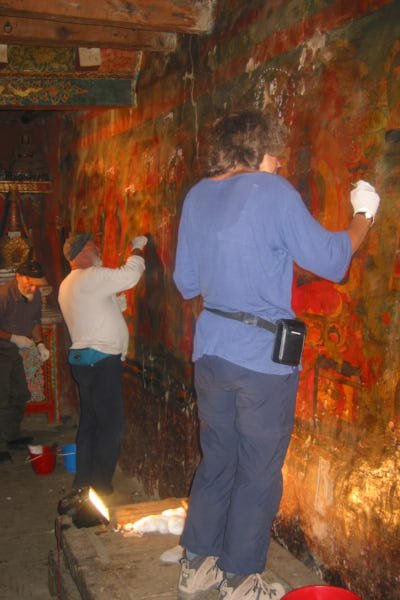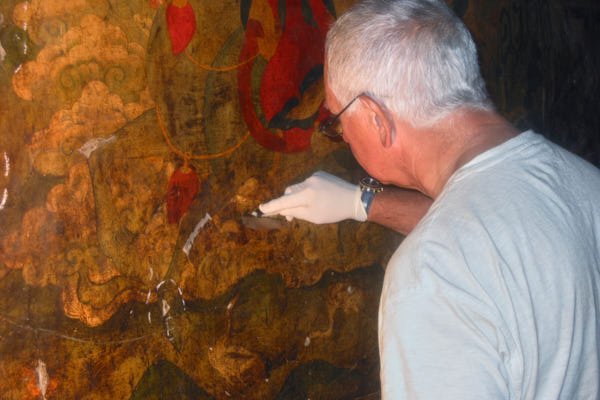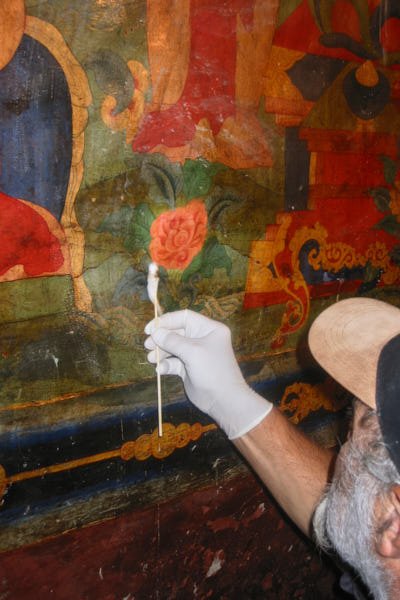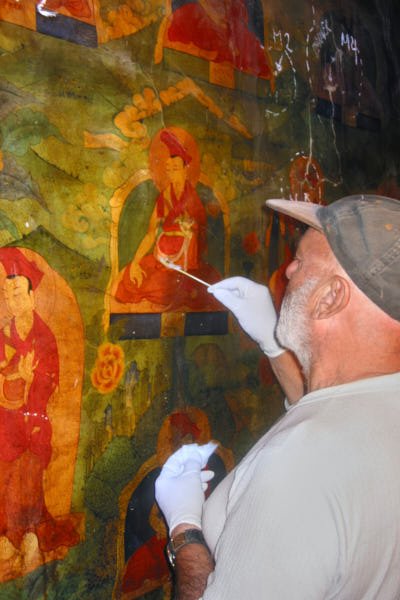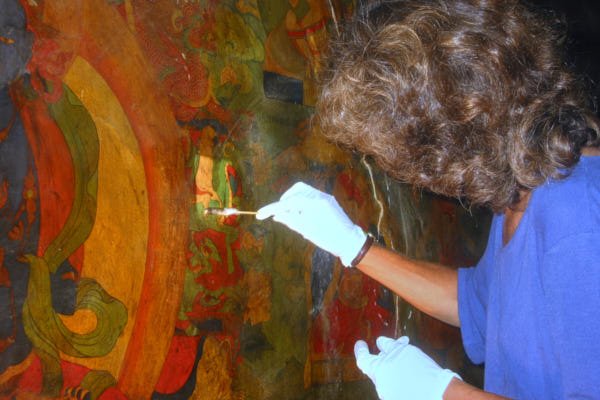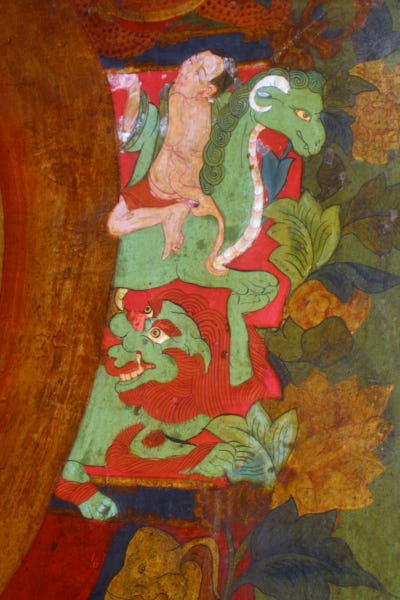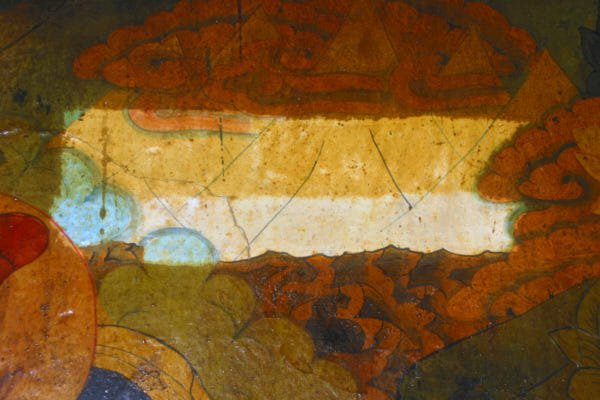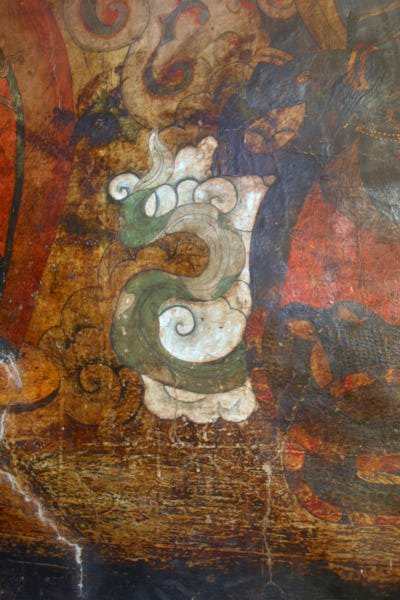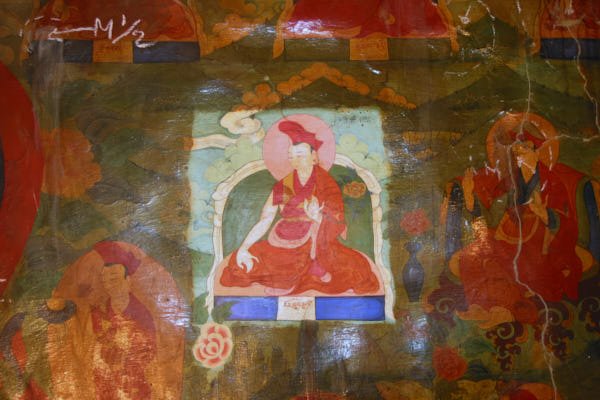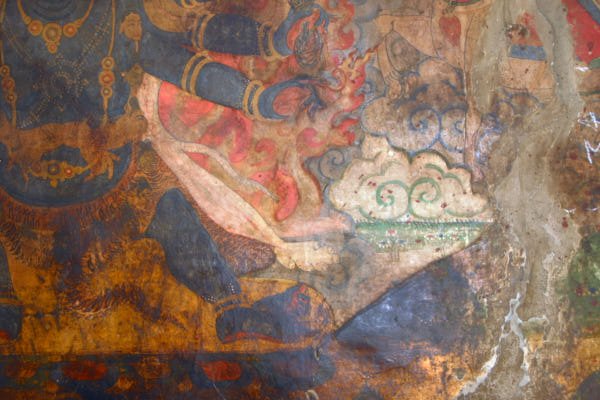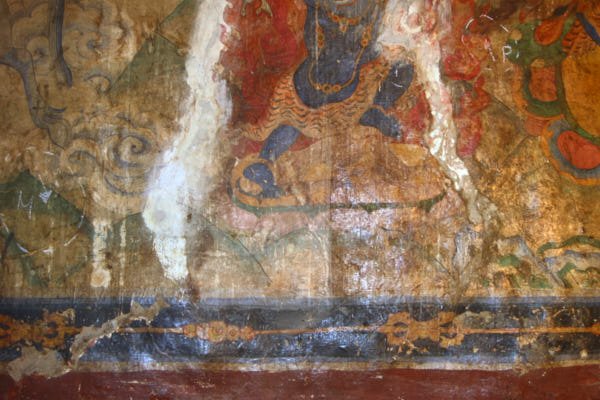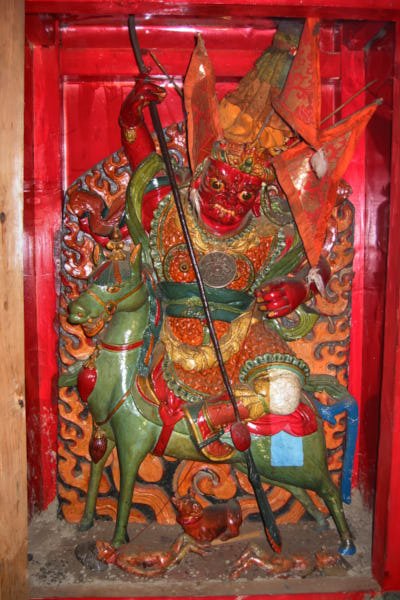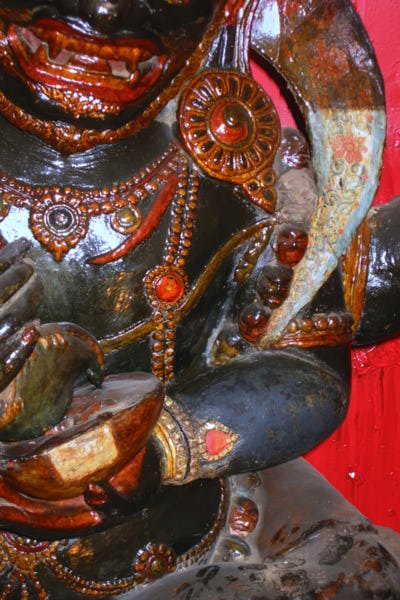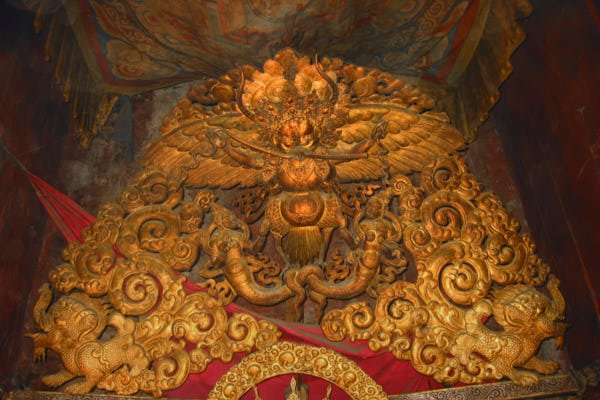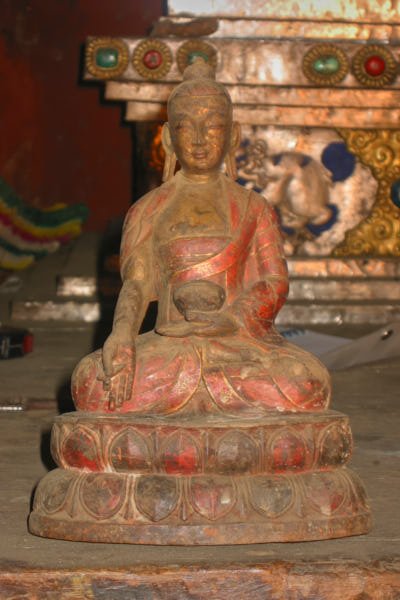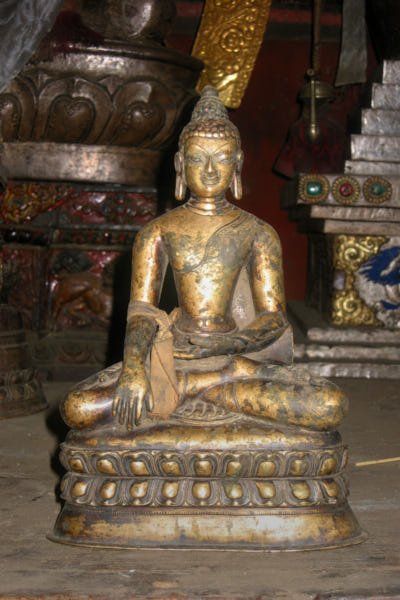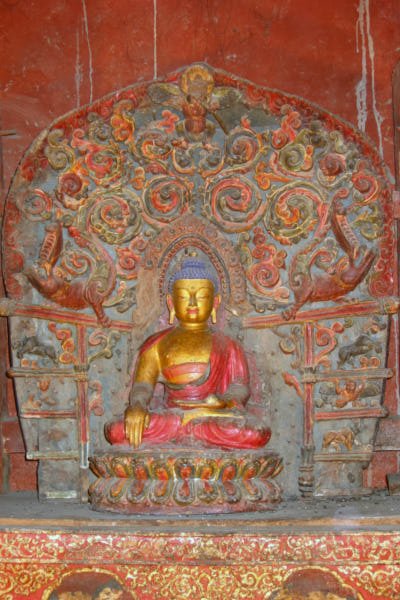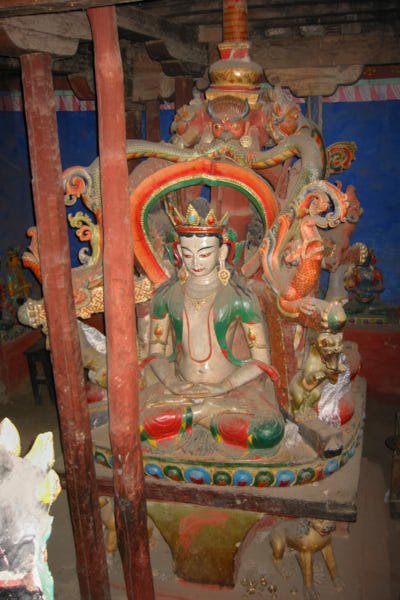The worksite was located in Limi Valley, Humla district, and used to be reachable only after a long trek from Simikot. The 8-10 day walk would lead to the village of Halji, located at 3,600 meters. Even though the foundation of rinchenling monastery dates back to the 10th century, only a few of the artifacts within the monastery can be considered contemporaneous.
The project, started in 2003, was sponsored by The Rotary Club U.K. in collaboration with Nepal Trust and carried out by John Sanday Associates. The main aim was to train volunteer trekkers and locals in restoration techniques for the safeguarding of Halji’s cultural heritage. The first phase of the project consisted of emergency consolidation operations together with a study of the stratification of the soot and the varnish present on the surface of the wall paintings to find out the most suitable chemicals for their removal. In addition, cleaning samples were carried out in different areas so as to check the efficacy of the solutions. The cataloguing of all statues and artefacts present in the monastery was another important achievement. In total, 117 statues and chortens made from clay, metal and wood were identified, measured and photographed.

